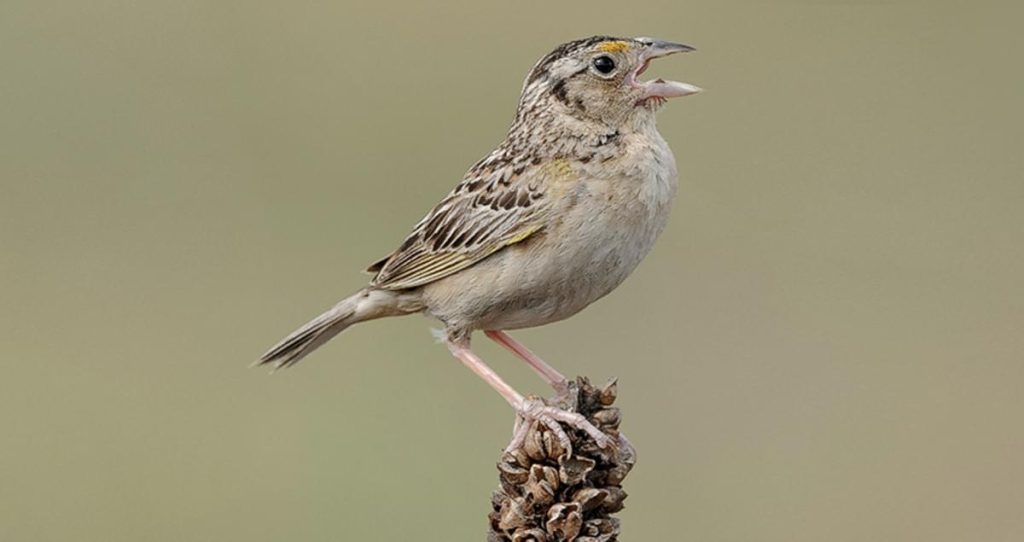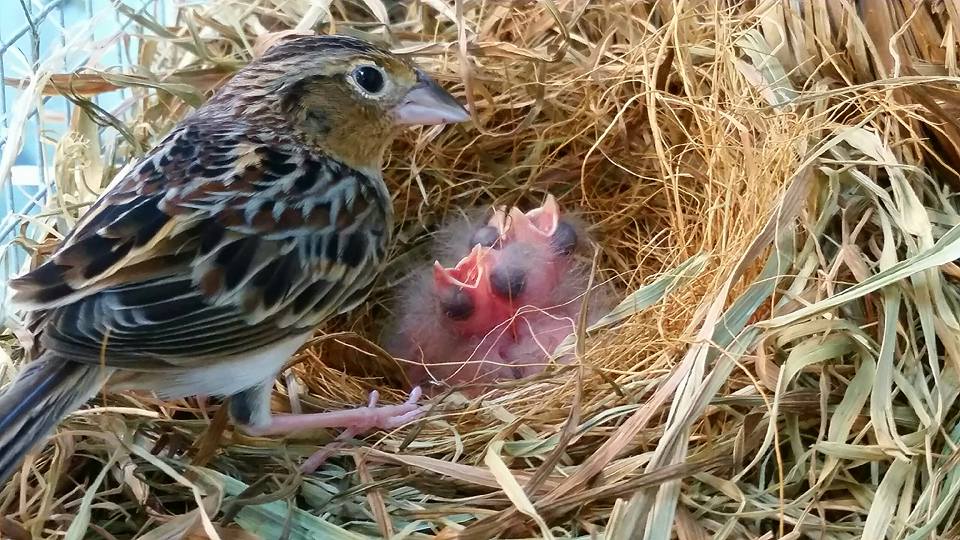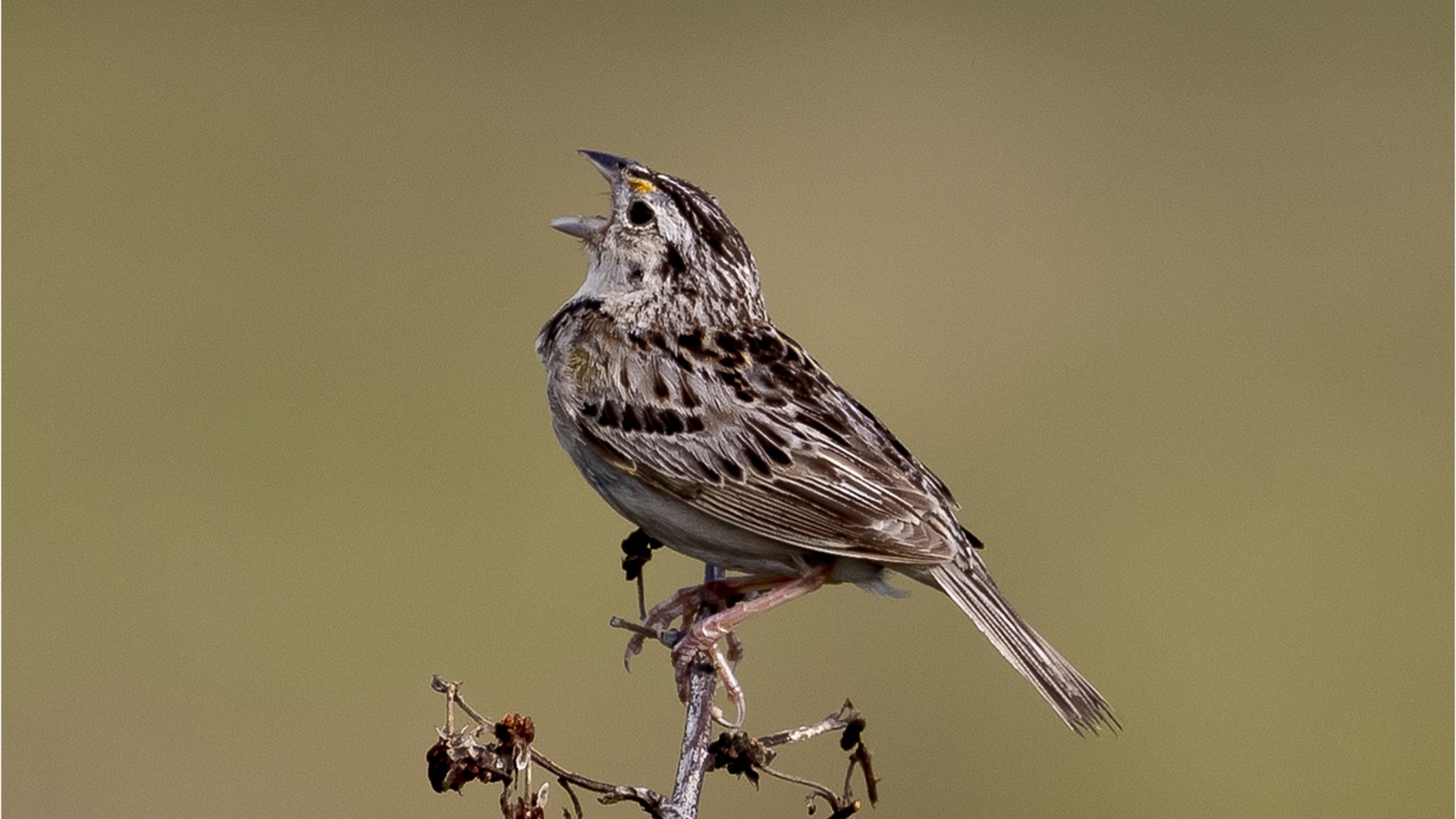
Conservation Breakthrough: 1,000th Florida Sparrow Grasshopper Released from Captivity
An important environmental event took place in Florida: conservationists celebrated the release of the 1,000th Florida grasshopper sparrow, bred in captivity. This unique species, which is under threat of extinction, has received a second chance at life in the wild thanks to the efforts of scientists and ecologists. The population restoration program, which began several years ago, has demonstrated significant success, and the release of the 1,000th individual was a real breakthrough in preserving the region’s biodiversity.
Bringing Back to Life: How a Successful Breeding Program Revived the Florida Grasshopper Sparrow
The Florida grasshopper sparrow, a tiny bird only 5 inches tall, is found exclusively in the prairie areas of central Florida. Its numbers have declined significantly over the past 50 years, primarily due to habitat loss and degradation. In the 1970s, the grasshopper sparrow was common in seven central Florida counties. However, by the 2000s, its range had shrunk to three counties, and the population had dropped from thousands to only hundreds.
By 2015, the situation had reached a tipping point: surveys revealed that fewer than 50 individuals remained in the wild. In response to the threat of extinction, conservationists took drastic action, moving the remaining breeding pairs from their native territories. The captive breeding program was a calculated risk, designed to ensure that a controlled population recovery would be more successful than trying to preserve the birds in a natural environment that was continuing to deteriorate and fragment.
Adrienne Fitzwilliam, chief scientist for grasshopper sparrow research at the Florida Fish and Wildlife Conservation Commission, said: “The breeding and release program has played a key role in preventing the extinction of the Florida grasshopper sparrow.” She admitted there was uncertainty at first, saying: “We were concerned that by taking away the most valuable breeding pairs we might only hasten their extinction.”

The program began releasing birds in 2019 at three key sites, and has also established additional monitoring areas. Birds are typically released when they are about 40 days old and quickly adapt to their new environment.
Researchers are closely monitoring the newly released birds, a difficult task due to their well-camouflaged nests and secretive behavior.
Recent reports from the Avon Park military range, where the 1,000th grasshopper sparrow was released, show encouraging results. Researchers have recorded 16 breeding pairs and 30 males actively seeking a mate this season.
Even more encouraging are the figures from Three Lakes Wildlife Management Area, where the original program was launched. From just 11 pairs, the number has now risen to 40 pairs and 68 males, with the breeding season still ongoing.
Despite scientists’ warnings that the Florida grasshopper sparrow population has not yet reached the level of stability needed to be considered a species saved, these numbers represent significant progress.
Adrienne Fitzwilliam said: “These data show that the released birds have successfully adapted to the wild, are breeding and raising young, which is a remarkable success. Not only has this prevented extinction, but it has also opened up opportunities to explore new ecosystem-level solutions.”
The grasshopper sparrow’s diet consists primarily of grasshoppers and seeds, highlighting its key role in the ecosystem. As both a predator of insects and a prey item for larger birds and small mammals, this sparrow plays an important role in the Florida prairie food web. Its presence or disappearance can be an indicator of the overall health of the ecosystem.
Domino Effect in an Ecosystem: How Florida Grasshopper Sparrow Rebounds Change the Balance of Nature
The restoration of the Florida grasshopper sparrow population could create a domino effect in its ecosystem. By maintaining healthy numbers of grasshoppers and other insects, the sparrow plays a key role in controlling pest populations that might otherwise wreak havoc on native flora.
Furthermore, as a ground-dwelling bird, the nesting success or failure of the grasshopper sparrow may serve as an indicator of understory status and the effectiveness of land management approaches.
In recent years, the conversion of prairies to agricultural land has significantly reduced the range and numbers of the Florida grasshopper sparrow. These birds now depend on isolated and protected areas, such as closed military areas, for nesting and foraging. Habitat fragmentation affects not only sparrows, but also many other species that depend on the unique ecosystems of the Florida prairie.

FWC, along with partners like Audubon, White Oak Conservation, and the Fish and Wildlife Foundation of Florida, is exploring land management strategies that can support the species and its ecosystem. One such approach is windrowing, which prepares the soil for controlled burning and allows native vegetation to recover more quickly.
Scientists are monitoring nesting outcomes in swathe-cut areas to see if the treatment affects the level of cover available to predators, which are the main threat to sparrow nests. These conservation efforts demonstrate that even species on the brink of extinction can be brought back from the brink of extinction through targeted action and sustained dedication.
With the ongoing threat of climate change and habitat loss, the success of the Florida grasshopper sparrow represents a ray of hope and serves as an example for future conservation efforts.
The recovery of this tiny species is not only a success for one species, but also a symbol of the rebirth of nature when it is given the opportunity to recover. By returning to the Florida prairie ecosystem, the Florida grasshopper sparrow becomes living proof of the importance of preserving biodiversity and the power of human intervention to have a positive impact on the world around us.